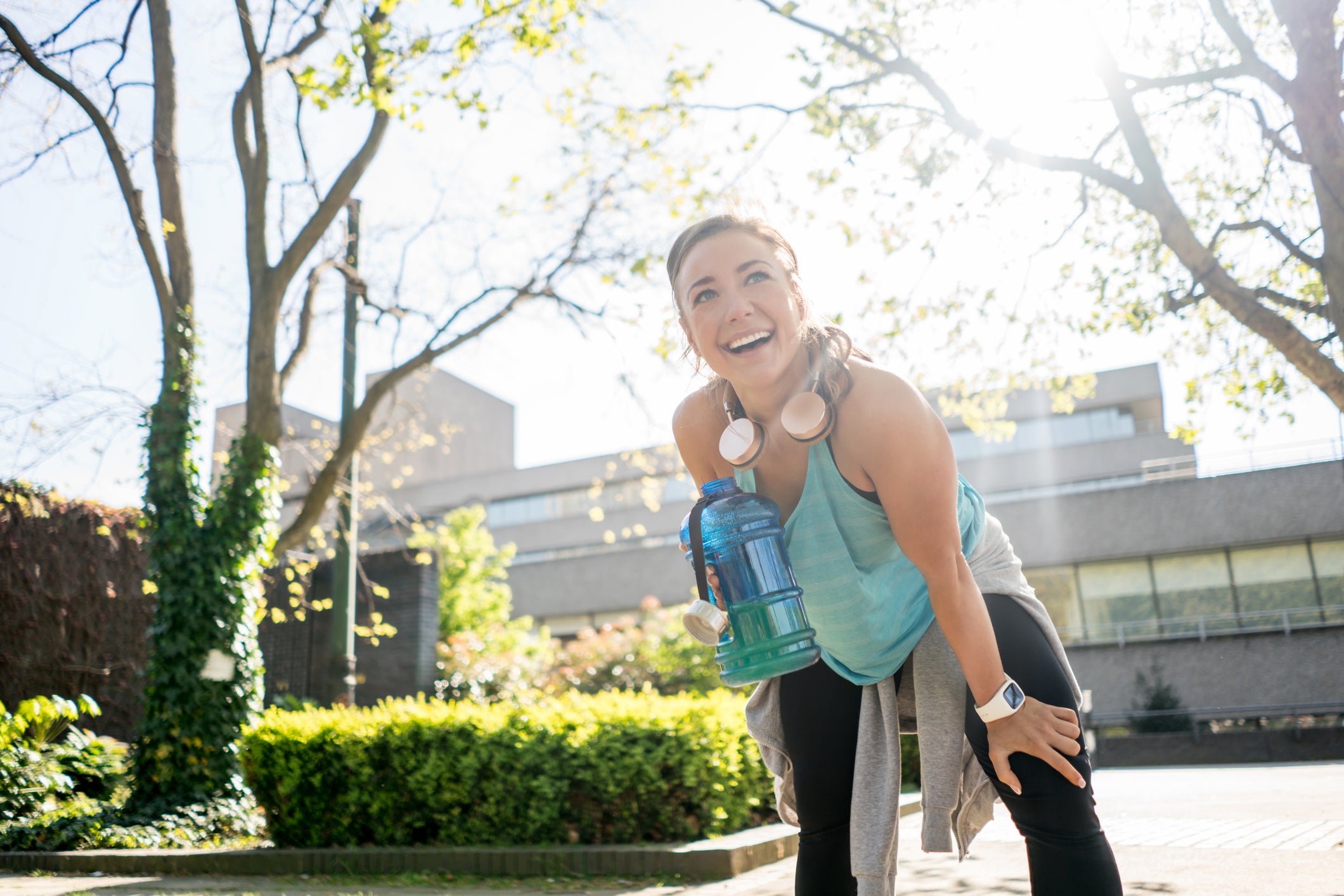The warm up and cool down routine every marathon runner should know about
Don’t start with yoga stretching and never finish with a sprint: running coach Keith Anderson on how to structure each run as you build up to the big race

In 2023, Buxton is proud to partner with Mind to support the sweat and tears of 15 Rise Up Runners. 15 real people, each facing their own physical and mental struggles, who are bravely taking on the ultimate test of resilience: The London Marathon. We’ve enlisted the help of professional running coach Keith Anderson to share his top training pointers to help them and you prepare physically and mentally for the big day.
Do the right kind of warm up for the run you’re doing
Much of the early training you do as a beginner will be steady running and for this it’s very much a case of just gradually letting the muscle groups warm themselves up as you go. When Keith Anderson was in Kenya he ran with legendary runner Moses Kiptanui. “We would meet at six o’clock in the morning and set off at a shuffle and then gradually we’d start to jog and then gradually we’d start to run. It’s a great way for the muscle groups involved to gradually warm up.”
Make sure you’re hydrated before you run
Just two per cent dehydration can lead to a drop off of 20 per cent in performance so make sure you’re properly hydrated before you run. “Your urine should be straw-colour or clear,” says Anderson.
Time your stretching right
As you get deeper into your training you’ll want to start doing some medium intensity running, some speed endurance work and potentially some hillier more undulating runs. These require a bit of a warm up. Don’t stretch before you head off. “These days, pre-running static stretching is not seen as a good thing to do. Better to start with a light jog for maybe 15 minutes and then add some dynamic stretching. These are done while you’re walking: quad stretches, hamstring dip stretches, high knee skips, butt kicks, high leg swings.” With these, though, consider your fitness levels and flexibility. If you’re not in the right shape they can do you more harm than good.
Wind down gently
“Once you’ve done some intense running, you want to end your training with 15 minutes of easy jogging, just to let the body calm back down again. This allows blood to continue to pump through the muscle cells and get rid of some of the waste products that the harder running will have produced. And then you’re in a position to stop. Because if you just do the hard work and stop with the heart still pumping blood at a fair old rate, it’s just going to pool in your muscles, and that’s not going to help recovery at all.” And whatever you do, don’t finish with a sprint: “All that good work you’ve done in the right zone, at the right heart rate, you’ll blow it all by sprinting down the homestretch and filling your muscles full of lactic acid.”

Replace the fluids
Once you get to your cooldown phase, you’re likely to be dehydrated and it’s important to replace the fluids. “You want to sip, not gulp. It can take a few hours not a few minutes so make sure you have a bottle of water beside you.”
The cool down
Once you’re started to rehydrate and have had a bit of food, you might have a shower to ensure your muscles are still warm. After that, it’s time to stretch the major muscle groups. Start with your lower back and glutes. Then stretch your hamstrings, quads, calves and hip flexors. As Anderson notes: “There is some debate about post-run stretching but I think it is definitely beneficial, particularly once you’re in your 40s.”
Register for the chance to WIN a 2024 TCS London Marathon place




Bookmark popover
Removed from bookmarks